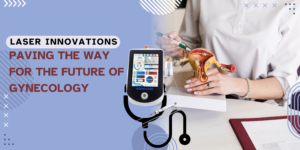Advanced Laser Solutions for Complex Anorectal Conditions: A Game-Changer in Proctology
The field of proctology has witnessed a groundbreaking transformation with the advent of laser technology. For patients suffering from complex anorectal conditions, this innovation is not just a medical advancement—it is a game-changer that offers a minimally invasive, effective, and faster-healing alternative to traditional surgical methods. Laser treatments have revolutionized the management of severe cases, ensuring better outcomes with reduced complications, less pain, and shorter recovery periods.
Advantages of Laser Proctology
Laser proctology stands out due to its precision, minimal invasiveness, and enhanced recovery benefits. Traditional anorectal surgeries often involve extensive tissue dissection, leading to prolonged hospital stays, significant pain, and a high risk of postoperative complications. In contrast, laser-based interventions offer:
- Minimally invasive procedures: Small incisions or even incision-free approaches significantly reduce tissue trauma.
- Reduced bleeding and infection risk: The precision of laser technology minimizes damage to surrounding healthy tissues and promotes coagulation, lowering the likelihood of excessive bleeding or postoperative infections.
- Faster healing and shorter recovery times: Many patients can resume their daily routines within days, avoiding the extended convalescence associated with conventional surgeries.
- Lower recurrence rates: Laser treatments provide a more effective resolution for many anorectal disorders, reducing the likelihood of recurrence and the need for repeat interventions.
Applications in Complex Anorectal Cases
Laser technology is particularly effective in managing complex and severe anorectal conditions that significantly impact a person’s quality of life. Some of the most challenging cases include:
4th-Degree Hemorrhoids with Prolapse
Unlike mild or moderate hemorrhoids, 4th-degree hemorrhoids remain prolapsed outside the anal canal and do not retract. Traditional surgical approaches, such as hemorrhoidectomy, can be extremely painful and require prolonged recovery. Laser hemorrhoidoplasty provides a less invasive alternative by targeting and shrinking the swollen blood vessels, leading to rapid relief and minimal postoperative discomfort.
Recurrent Anal Fissures with Chronic Spasm
Chronic anal fissures accompanied by severe anal sphincter spasms can be debilitating, often making defecation excruciatingly painful. Standard treatments, such as lateral internal sphincterotomy, carry risks of incontinence. Laser sphincterotomy, however, offers a controlled and precise approach to reducing sphincter pressure while preserving anal function.
Complex Anal Fistulas (High Transsphincteric and Suprasphincteric Fistulas)
Complex anal fistulas, especially high transsphincteric and suprasphincteric types, pose significant challenges due to their intricate tracts that pass through multiple layers of muscle. Traditional fistulotomy often risks fecal incontinence. Laser-assisted fistula treatment (LAFT) effectively seals the fistulous tract without excessive tissue removal, leading to better healing and lower recurrence rates.

Pilonidal Sinus with Extensive Tracts
Pilonidal sinus disease, particularly cases with multiple sinus openings and complex branching tracts, often requires invasive excision with a prolonged recovery. Laser ablation provides a targeted approach, destroying the infected tissue while preserving healthy skin, ensuring faster healing and reduced post-surgical discomfort.
Rectovaginal and Anorectal Fistulas
Rectovaginal and anorectal fistulas are distressing conditions that cause abnormal connections between the rectum and the vagina or other anorectal structures. These fistulas are challenging to treat surgically due to their delicate location and high recurrence rates. Laser-assisted closure offers a less invasive, sphincter-preserving solution that promotes healing without major tissue disruption.
Condylomas and Anorectal Cancers
Advanced laser technology is also being utilized in the treatment of complex cases such as extensive anal condylomas (HPV-related warts) and early-stage anorectal cancers. Laser excision helps remove lesions with high precision, reducing damage to surrounding tissues and improving functional outcomes.
Patient Experiences and Outcomes
The true success of laser proctology lies in the transformative experiences of patients. Individuals who have undergone laser procedures for complex anorectal conditions report significant improvements in their quality of life. Studies indicate that:
- Over 85% of patients with laser-treated high anal fistulas experience complete healing with minimal recurrence.
- 70% of chronic fissure patients report pain relief within the first 48 hours post-procedure.
- Patients undergoing laser hemorrhoidoplasty for severe prolapsed hemorrhoids resume normal activities within 3-5 days, compared to 2-3 weeks with conventional surgery.
With the ongoing advancements in laser technology, the future of proctology looks promising. Patients now have access to cutting-edge treatments that not only alleviate pain but also enhance recovery, enabling them to reclaim their lives without the burden of prolonged suffering.
Laser proctology has revolutionized the treatment of complex anorectal conditions, offering patients a safer, less invasive, and more effective alternative to traditional surgical methods. With its unparalleled precision, reduced complications, and enhanced recovery times, laser technology is paving the way for a new era in proctological care. As more practitioners adopt these advanced techniques, patients suffering from complex anorectal disorders can look forward to improved outcomes and a better quality of life.


Comments